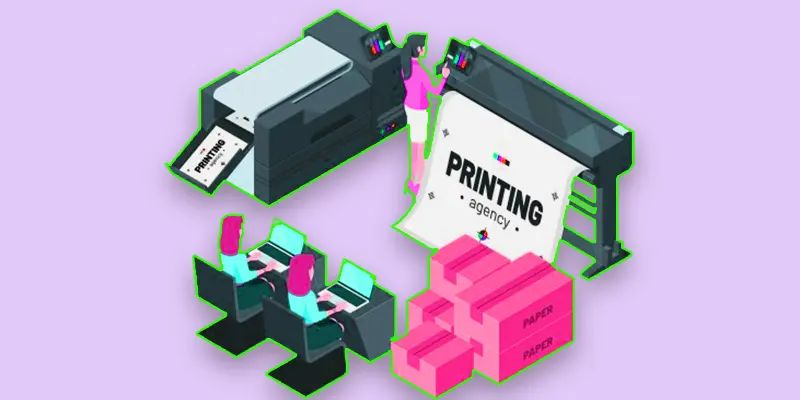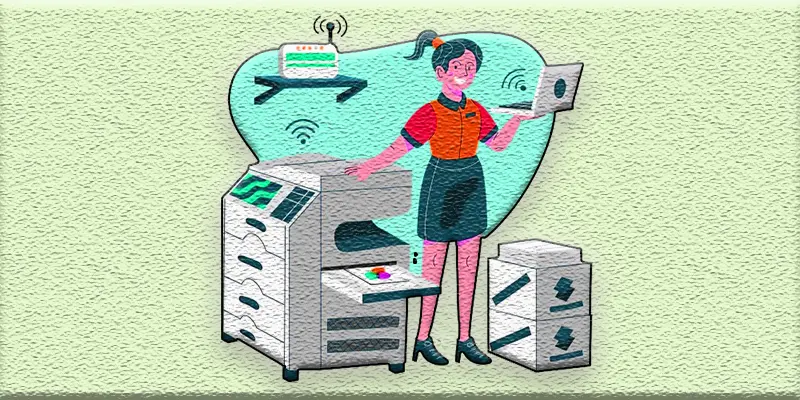What are the Disadvantages of Printers?
Updated: March 8, 2024
733
Printers are important devices in homes and offices for producing physical copies of documents, photos, and other materials. They also provide comfort and efficiency in various tasks. However, users should know the multiple advantages and disadvantages of printers. Printers’ advantages include convenience, versatility, ease of use, the ability to produce physical copies of documents, and much more. We will discuss ten common disadvantages of printers: high ink or toner costs, maintenance requirements, potential technical issues, limited printing speeds, etc.
Let’s Start the 10 Disadvantages of the Printer
High ink or Toner costs
“High ink or toner costs” refers to the excessive expenses of buying new printer ink or toner cartridges. Replacing printer ink and toner cartridges can be costly, especially if you print a lot.
Maintenance Requirments
Printer maintenance requirements refer to what is necessary to maintain optimal working conditions. These maintenance activities help prevent issues such as paper jams, print quality problems, and mechanical failures, ensuring reliable performance and extending the printer’s lifespan.
Potential Technical Issues
Various factors can cause potential technical issues with printers, including hardware faults, software conflicts, connectivity problems, and environmental factors. By being aware of technical issues and implementing the proper steps, printer users can effectively address problems and maintain optimal performance from their printers.

Limited Printing Speed
Limited printing speed refers to the speed at which a printer can produce printed pages or documents. Various factors influence printing speed, including printer type, print resolution, the complexity of print jobs, connectivity, settings optimization, processing power, and workload.
Compatibility Issues
Compatibility issues with printers mean the printer might need to work better with specific computers, programs, software applications, or operating systems. These issues can be displayed in various ways and may stop the printer from functioning correctly or limit its capabilities.
Environmental Impact
Printers’ environmental impact includes resource consumption, energy usage, waste generation, and emissions. People and organizations can contribute to a healthier and more sustainable planet by minimizing their ecological footprint and adopting tolerable printing practices.

Limited color Printing options
Limited color printing options refer to conditions or limitations in a printer’s color capabilities. These can displayed in various ways, such as limited color reproduction, reduced color accuracy, or the absence of certain color features.
Security Risks
Security concerns related to printers are problems that could threaten the safety, privacy, and accuracy of data managed or stored by printers. These risks can come from various sources, including network attacks, physical access, malware infections, and improper configuration.
Noise Levels
Noise levels refer to the amount of sound a printer produces during operation. Printers can generate various types of noise, including mechanical noise from moving parts and fan noise from cooling systems. To noise levels, manufacturers may employ multiple design techniques, such as using sound-dampening materials and optimizing mechanical components for more silent operation.
Limited Lifespan
The limited lifespan of printers refers to the limited period during which a printer remains operational and practical for printing tasks. Printers provide reliable printing functionality for a certain period, but their lifespan is naturally limited due to mechanical wear, consumable depletion, maintenance requirements, environmental factors, and manufacturing defects.

Conclusion about Disadvantages of Printer
Printers’ disadvantages include comfort and functionality in producing physical copies of documents, photos, and other materials, but they also have several disadvantages that users should consider. From ongoing costs and maintenance requirements to potential technical issues and environmental impact, understanding these drawbacks can help users make informed decisions about using printers in their daily tasks.
FAQS (Frequently Asked Questions)
Disadvantages of printer sharing?
The main disadvantages of sharing a printer include potential security risks, slower printing speeds if numerous users are printing all together, and the need for coordination among users to avoid conflicts.
What are the disadvantages of a 3D printer?
Some disadvantages of a 3D printer include high initial costs, limited production speed for complex objects, limited material options compared to traditional manufacturing methods, and the need for technical expertise to operate the printer effectively.
Disadvantages of printer computer?
Disadvantages of using a printer with a computer may include compatibility issues between different devices, potential technical problems with connectivity or software drivers, and the need to configure settings for optimal printing results.
Disadvantages of the printing business?
Running a printing business can have disadvantages, including high overhead costs for equipment and supplies, competition from online printers and digital media, fluctuations in demand for printed materials, and the need to stay updated with industry technology advancements.
Write the disadvantages of a laser printer?
Disadvantages of a laser printer include higher upfront costs than inkjet printers, potential environmental concerns related to toner cartridges, limited color printing capabilities for some models, and larger physical size than compact inkjet printers.
Please Write Your Comments